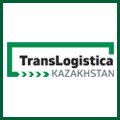Kongsberg Evotec, a wholly owned subsidiary of Kongsberg Maritime, has received an order for a second Bulk Hose Securing Unit, BHSU, for the LNG vessel ‘Viking Queen’ from Eidesvik Offshore ASA.
Kongsberg Evotec developed the technology through Statoil’s LOOP technology development programme in cooperation with Innovation Norway and Eidesvik. The prototype was installed and tested aboard the Viking Queen in December 2010.
The prototype has completed an extended test program and the feedback has continued to be very positive. The companies involved reported that the BHSU system has supported human resource management improvements and achieved high operational safety levels.
Currently, crew on board vessels stand on a cargo rail to manually receive and secure bulk hoses used for the transfer of bulk cargo from ship-to-platform or vice versa. Kongsberg Evotec's BHSU system makes the operation much safer as the procedure is now coordinated and maintained from the wheelhouse and crew no longer need to enter the hazardous area. This increases safety for both crew and vessel during critical bulk transfer operations.
Kongsberg Evotec AS was acquired by Kongsberg Maritime in October 2011 and is an established supplier of marine handling systems. In addition to the BHSU and other handling systems, Kongsberg Evotec also designs cranes, complete with handling systems including winches, power units, bulk handling and control systems.
Source Kongsberg Maritime
One of Israel's largest bus operators, DAN Society for Public Transport, has presented the first of 172 futuristically designed buses in Haifa that will form the backbone of the state-of-the-art Bus Rapid Transit (BRT) systems in the major cities of Haifa and Tel Aviv. MAN Truck & Bus is supplying three-axle low-floor articulated buses for this system, powered by 360-hp common-rail diesel engines that comply with the currently strictest EEV (enhanced environmentally-friendly vehicle) emission standard. The futuristic bodies of the buses, which are equipped with powerful air-conditioning systems suitable for hot climates, are manufactured locally in Israel by the Ha'argaz company.
What is special about the bus chassis supplied by MAN is that they combine low floors throughout with a vehicle length of 18.75 metres. This construction, together with the body's four double doors, makes for especially time-saving boarding and alighting, a vital feature of an efficient BRT system.
With MAN common-rail diesel engines, transportation company DAN will be focusing on clean exhaust engines. The EEV standard sets considerably lower limits for particulate emission than the Euro 5 standard currently applicable in Europe.
MAN is the market leader for city buses in Israel. The basis of over thirty years of cooperation between DAN and MAN is the reliability of the buses. Today almost every single one of DAN's fleet of 1,200 buses is built on an MAN chassis.
Bus Rapid Transit systems enable the modernization of a city's transportation infrastructure without the need for extensive construction work on building underground lines. In principle, BRT systems can be compared with inner-city rail systems such as trams and metros, but they can be constructed more quickly and more cost-effectively, besides having far more flexibility. They are relatively easy to integrate into existing urban structures and are not reliant on an exclusive infrastructure end-to-end.
The foundation of any BRT system is formed by modern city buses with high passenger capacities. MAN's broad range of bus chassis and complete buses are an excellent basis for this. MAN is also in a position to offer individual vehicle solutions with the reliability of a high-volume manufacturer.
Other characteristics of a BRT system are separate lanes and platform stops where tickets are sold and access is automatically controlled - i.e. before the bus is boarded, in order to optimize the passenger flow. Passenger information and automatic display of upcoming departure also enable the transportation of passengers to run more smoothly.
Source MAN SE
Finnair’s summer traffic schedule, coming into effect on March 25, includes flights to some familiar summer destinations, more frequencies to various other destinations and an exciting new seasonal destination, Dubrovnik. In May Finnair also starts year-round flights to a completely new Asian destination, Chongqing in China.
Finnair flights to Dubrovnik on Croatia’s southern coast are launching on April 2 and will continue until the end of the summer timetable period on October 27. The new direct flight to Chongqing opens on May 9 and operates four times per week through the year. Finnair is the first airline to operate non-stop flights between Europe and Chongqing.
Popular destinations back in the schedule for the summer are:
Krakow, whose old town is on the UNESCO World Heritage list, from April 9 to October 25
Venice, perennial favourite and holiday destination, March 29 to October 25
Ljubljana, the jewel of Slovenia, April 9 to October 25
Bergen, the charming city on Norway’s west coast, from May 20 to September 28
Toronto, Canada’s biggest city and gateway to the fabulous Niagara Falls, May 24 to September 10
Chicago, launched last summer as a code share with American Airlines, June 15 to October 27.
Extra frequencies will be added to the following flights:
Flights to Tokyo are increased to 10 per week as of May 31
Flights to Vilnius are increased to 18 per week from 25 June to 12 August
Flights to Barcelona are increased to 9 per week from June 28 to August 10
Flights to Budapest and Prague are operated twice daily over the summer.
Source Finnair Plc
2012-03-20
Euronav (one of the world's leading independent tanker companies engaged in the ocean transportation of crude oil and petroleum products), announcing the company's final results for 2011.
Source IMPRESS COMMUNICATIONS LTD
A new maritime industry conference, scheduled for October 2012 in Stamford, Conn., will provide a forum for discussion of fleet optimization and efficient ship operations, according to its organizers.
The SHIPPINGInsight Fleet Optimization Conference is being co-produced by Soccoli Associates LLC, a maritime consultancy, and Rhodes Communications, Inc., an international communications firm specializing in the maritime industry. Maritime Reporter and Maritime Professional are the exclusive media sponsors for the event.
“In the current economic client, it is imperative that ship owners find effective tools and techniques to operate their vessels more efficiently,” said Frank Soccoli, president of Soccoli Associates LLC and SHIPPINGInsight conference co-director. “This conference will bring together stakeholders from across the industry to explore best practices to achieve gains in ship efficiency, including hull design, fuel and bunkering, ship routing, asset management and IT solutions.”
“The Fleet Optimization Conference is the first in a new series of conferences that will be marketed under the SHIPPINGInsight brand, addressing the pressing issues faced by ship and fleet operators in the 21st Century,” said conference co-director Jim Rhodes, president of Rhodes Communications, Inc. “We will hold future conferences covering other timely themes such as risk management, maritime safety and crew training in other maritime centers around the world in the future.”
The SHIPPINGInsight conference will bring together representatives from ship and fleet operators, as well as naval architects, marine engineers, shipyards, classification societies, IT specialists, system integrators and regulatory bodies. The organizers are assembling a roster of senior executives from across the shipping industry spectrum as speakers and panelists.
The specific dates and venue will be announced within the next two weeks, said the organizers. In the interim, for conference details visit: www.shippinginsight.com.
Source
Soccoli Associates LLC
Rhodes Communications, Inc.
Syracuse, N.Y., March 19, 2012 – Reflecting the shipping industry’s continued trend in the adoption of energy efficient equipment that reduces lifecycle costs, Carrier Transicold reported that its PrimeLINE® container refrigeration unit has surpassed previous records, selling nearly the same number of units in 2011 as in the prior three years combined. Carrier Transicold helps improve global transport and shipping temperature control with a complete line of equipment for refrigerated trucks, trailers and containers, and is a part of UTC Climate, Controls & Security, a unit of United Technologies Corp. (NYSE: UTX).
“For four successive years, the PrimeLINE unit has outsold all competitive models, and 2011 – a record year for the industry – accelerated this trend,” said David Appel, president, Carrier Transicold. Appel credited the PrimeLINE unit’s success with its industry-leading efficiency, which responds to the market’s need for more sustainable solutions. Carrier’s ThinLINE® unit, the historic market leader, also surpassed previous-year sales in 2011.
“When Carrier introduced the PrimeLINE unit in 2007, we set a new benchmark for efficiency,” Appel said. “The timing was right for shipping lines of all sizes, as the new reality of uncertain and ever-climbing fuel costs took an increasingly large toll on their bottom lines. With fuel prices again approaching record levels, the need for energy efficiency is as essential as ever.”
Over the years, Carrier has received significant orders from Maersk Line, Evergreen Line, Hamburg Süd, Chiquita, Dole, Crowley Maritime, Arkas Shipping and Transport and many others in the shipping, leasing and exporter sectors.
The PrimeLINE unit’s exceptional efficiency – thanks in part to its efficient digital scroll compressor – significantly reduces on-board power generation requirements, helping shipping lines save fuel used in the generation of electricity. This, in turn, helps hold down operating costs and reduce emissions related to power generation. The PrimeLINE unit reduces carbon emissions 28 percent compared to previous units.
As fuel is the leading component of ownership cost over the life of a unit, energy efficiency helps to keep the total cost of ownership low.
In addition to its exceptional efficiency, the PrimeLINE unit also offers best-in-class pulldown among all container refrigeration units, as well as best deep-frozen capability among those that use R-134a, the non-ozone depleting refrigerant with the lowest global warming potential of all contemporary container refrigerants. No other container refrigeration unit provides dehumidification capability lower than the PrimeLINE unit, and none can achieve 50 percent relative humidity as efficiently.
For even greater energy efficiency, the PrimeLINE unit can be equipped with the optional QUEST power-saving mode. For more information on the PrimeLINE system design, visit www.container.carrier.com.
Source Carrier Transicold
DUBAI-based Emirates Shipping Line has announced it will impose a general rate increase (GRI) for services from Indian subcontinent and Middle East to East Africa by US$200 per TEU with effect from April 1.
The carrier is registered in Dubai Maritime City, UAE and headquartered in both Dubai and Hong Kong.
Source Shipping Gazette - Daily Shipping News
TAIWANESE shipping giant Evergreen's Asia-Med UAM service has been delayed from April to May with western Mediterranean ports being replaced by Adriatic ports, reports London's Containerisation International.
Western Mediterranean ports will be served via a slot exchange on the CKYH's MD1, MD2 and MD3 services with Cosco, "K" Line, Yang Ming and Hanjin taking slots on the UAM service in return.
The new UAM service will deploy eight 5,364 to 5,652-TEU ships and will rotate through Busan, Qingdao, Shanghai, Ningbo, Kaohsiung, Hong Kong, Shenzhen-Yantian, Tanjung Pelepas, Colombo, Ashdod, Alexandria, Taranto, Koper, Rijeka, Trieste, Taranto, Colombo, Tanjung Pelepas, Kaohsiung, Hong Kong, Shenzhen-Yantian, Shanghai, Ningbo and back to Busan.
The old UAM calls at Shanghai, Ningbo, Kaohsiung, Hong Kong, Shenzhen-Shekou, Shenzhen-Yantian, Tanjung Pelepas, Colombo, Ashdod, Alexandria, Taranto, Genoa, Barcelona, Valencia, Taranto, Jeddah, Colombo, Tanjung Pelepas, Kaohsiung and back to Shanghai.
Source Shipping Gazette - Daily Shipping News
APM TERMINALS of Netherlands has opened a Hong Kong office to further expand its partnerships with Asia-based customers when making global network decisions on port calls and inland routing, the company announced.
"We want to be more of a resource partner with intelligent solutions rather than just a vendor. So we've beefed up our client teams with people who have held senior positions in the liner and logistics business. Thirteen out of our 20 largest customers are based in Asia so it was important to establish a sales office in this vibrant region and Hong Kong - one of the world's key business centres chosen as the ideal location to cover the key Asian locations," said Martin Gaard Christiansen, CCO and a former CEO of the Asia Pacific region for APM Terminals with 17 years experience in Asia.
A team of dedicated key client managers will be based in the office to serve customers based in Hong Kong, mainland China, Singapore, Taiwan, South Korea and Japan. "Partnerships between shippers, carriers and terminal operators will be the key to unlock shared value and eliminate waste in the supply chain; and to achieve that the parties need to have trusting relationships, which are built by being close to each other," said Mr Christiansen.
Through the new Hong Kong office, the Maersk group unit will bring its Global Terminal and Inland Services Network even closer to its Asian customers to identify opportunities for servicing their global activities. "The customers have to be at the centre of what we do and the solutions we deliver. APM Terminals wants to be recognised for having a customer centric business approach and through the new Hong Kong office we can continue expanding this with our Asia-based customers" he said.
Source Shipping Gazette - Daily Shipping News
REPRESENTATIVES of Asian shipowners attending the 17th Interim Meeting of the Asian Shipowners Forum (ASF) Ship Insurance and Liability Committee (SILC) in Hong Kong have expressed their strong concern about the effect of recently introduced sanctions against Iran and its impact on innocent third parties and the global shipping industry.
The meeting heard that sanctions are increasingly being introduced and frequently updated and revised, with an increasing number of countries being targeted. The sanctions would appear to be intentionally vague in nature, with the apparent attempt to encourage companies to trade with an over abundance of caution. Sanctions are issued by many bodies and in many ways are illogically different in wording and nature.
The shipowners are concerned that transgression might occur in a way that was, at the time, unpredictable, so many will find that it is better to play safe.
Robert Ho, the chairman of the meeting remarked: "Shipping is a global business, and as such can find itself on the wrong side of sanctions for entirely the wrong reasons. We call upon all concerned to issue sanctions only through the United Nations, to better ensure consistent wording and application".
One example is the recent European sanctions prohibiting the provision, directly or indirectly, of insurance and reinsurance related to the transport of Iranian crude oil, petroleum products or petrochemical products.
While it is understandable that the prohibition of hull or cargo insurance would be an effective addition to the sanctions, the provision of liability insurance is a different matter for the reason that liability insurance protects innocent third parties. The committee calls upon the European Union to provide a derogation in the implementing regulation to exclude the application of the prohibitions on insurance/reinsurance to the provision of compulsory and/or third party liability insurance cover and its underlying reinsurance arrangements.
The 17th Interim Meeting of the ASF Ship Insurance and Liability Committee was hosted by the Hong Kong Shipowners Association. The Asian Shipowners' Forum is a voluntary organisation of the shipowner associations of Australia, China, Chinese Taipei, Hong Kong, India, Japan, Korea and the Federation of ASEAN Shipowners' Associations comprising shipping associations of ASEAN countries. The aims of the ASF are to promote the interests of the Asian shipowning industries.
Source Shipping Gazette - Daily Shipping News
SEASPAN, the Marshall Islands-registered shipowner, with major bases in Hong Kong and Vancouver, has received the 13,100-TEU Cosco Faith built by Korea's Hyundai Heavy Industries, expanding the Seaspan operating fleet to 67 vessels.
The Cosco Faith is on charter to Cosco under a 12-year, fixed-rate time charter. The ship is the sixth of eight 13,100 TEU vessels and the 16th of a total of 18 to be chartered to Cosco.
Hyundai Heavy (HHI), the world's number one shipbuilder, leads the shipbuilding industry with 15 per cent market share, said the Seaspan statement.
Source Shipping Gazette - Daily Shipping News
CONTAINER shipping lines have idled five per cent, or 800,000 TEU, and more lay-ups are to come, says Maersk Line new CEO Soren Skou, who expects a million TEU to be laid up, a level not experienced since downturn year of 2009, said Reuters.
Mr Skou said growth would slow to five to eight per cent, a steep fall from the 10 to 11 per cent enjoyed since the mid-1980s because of faltering western economic activity bringing with it a slowdown in Asian production.
"Demand growth will be less than what it was in the past," Mr Skou said. We are not ruling out laying up ships over the summer if the market is growing less than expected."
Maersk has already removed 9.5 per cent of its Asia-Europe capacity and has decided against ordering 10 more 18,000-TEU (Triple-E) ships and says it will continue to retain 15.5 per cent market share despite cuts.
Maersk can withdraw another nine per cent as the contracts for 20 per cent of its chartered vessels are due to expire this year, Mr Skou said.
The container shipping industry, which lost an estimated US$5.2 billion last year, according to Drewry Shipping Consultants, is starting to lay-up ships to support increased rates.
In 2011, average freight rates were eight per cent lower than 2010 while bunker prices increased 35 per cent, said Maersk.
Source Shipping Gazette - Daily Shipping News
DOCKERS earning US$300,000 a year, and some $400,000, for supposedly 24/7 service when they hardly show up at all is angering both the port officials and New York Shipping Association member companies that must pay them.
Patrick Foye, executive director for the Port Authority of New York and New Jersey, is wading through cases of "low-show" jobs at shipping terminals. "Payment of certain select people for 24 hours of work seven days a week when in fact they only work a few hours is wrong," Mr Foye said.
"The port authority has invested billions in the transportation infrastructure in the region, including billions in the region's ports, and is being asked to invest billions more. But before the industry can, issues of low-show jobs where certain selected members are paid 24-7 for a few hours of work have to be addressed," Mr Foye said.
"If the container terminals are claiming that business is tough and that it is hard to remain competitive with other ports, it's hard to justify that in terms of certain select members are being paid 24-7 for a few hours of work - low-show jobs is what I call that," Mr Foye told American Shipper.
Responding Jim McNamara, a spokesman for the International Longshoremen's Association (ILA), said the port authority has nothing to do with the negotiations between the union and United States Maritime Alliance and the New York Shipping Association.
NYSA president Joe Curto, representing employers said: "Any of the work practices have been known to us for some time and we can no longer defend the indefensible."
The Waterfront Commission, which fights crime in the port, held hearings in 2010 to examine what it said were featherbedding practices where some longshoremen are paid around the clock even if they do not show up.
Waterfront Commission executive director Walter Arsenault protested that there are 285 longshoremen who make more than $300,000 a year and several that make more than $400,000 a year.
Mr Foye's demands come as management and the International Longshoremen's Association, which represents dock workers in New York and up and down the east and gulf coasts, are scheduled to begin negotiations on a new contract to replace the current agreement that expires on September 30.
Source Shipping Gazette - Daily Shipping News
ALREADY tense US east coast labour-management set to start formally in the next two weeks will stand as a model for North American dockers, says Vancouver-based International Longshore and Warehouse Union (ILWU) president Tom Dufresne.
In an interview with London's Containerisation International, Mr Dufresne said his ILWU Canada was postponing plans to see what transpires in the US east coast negotiations with the International Longshoremen's Association (ILA) and their employers group.
A harsh tone was set when ILA president Harold Daggett made it plain that a strike was not off the table and indicated that negotiations would be stormy over new technology and employers' efforts to cut the waterfront labour force by moving some work away from the docks.
Port of Vancouver CEO Robin Silvester is proud of last year's eight-year peace deal with the ILWU and feels certain the port would win cargo from shippers worried about east coast labour talks.
"We will win some cargo - some shippers switched away from us without a strike just while negotiations were going on here, in west coast Canada while we were negotiating the new contracts in 2010. Shippers now know we have stability here, while there is no stability in the US," he said.
But Mr Dufresne said: "If there's going to be greater automation, then we want to make sure that it is not going to be just a machine plus an outsourced job to someone other than a member of the ILWU. A lot is going to depend on east coast negotiations. This could set a pattern for North America. It could give us a blue print of what to do and what not to do."
Mr Dufresne said that the ILWU had started apprenticeship programmes along the west coast to help dockers learn new technology to keep their jobs, but the schemes have not been put into action, partly because the west coast union wants to see what happens in the east coast ILA talks.
Source Shipping Gazette - Daily Shipping News
GLOBAL third party logistics providers specialising in customised freight forwarding and supply chain solutions, Damco, has signed a three-year contract to serve as the Asia Pacific lead logistics service provider for Basel-based Syngenta, the world's largest agri-business.
Under the agreement, Maersk's standalone forwarder Damco will arrange and manage Syngenta's global shipments of raw materials and finished goods from factories throughout Asia, providing end-to-end visibility.
The company will also provide integrated supply chain management services, including control tower, carrier management, and land-side services for all Syngenta shipments from China, India, Japan, Singapore, Korea, Thailand and Indonesia.
"This contract is a testament to Damco's position as a leading supply chain management provider in retail, technology and chemical industries," said Damco CEO Rolf Habben Jansen.
"We have a global footprint, with more than half of our staff in emerging markets. Together with our dedicated team of supply chain development specialists, this gives us the hands-on knowledge to optimise our customers' supply chains," he said.
Said Syngenta logistics chief Roger Herzog: "We are very pleased to have reached this agreement with Damco, one of the logistics industry's leading experts. This agreement, appointing them as our lead logistics service provider in Asia Pacific, is a critical element of our logistics strategy and also demonstrates our commitment to build a long-term relationship with them."
Source Shipping Gazette - Daily Shipping News
The magazine SEA has been published since 1935
International business magazine JŪRA MOPE SEA has been published since 1999
The first magazine in Eurasia in the four languages: English, Chinese, Russian and Lithuanian
|
|




.jpg)






